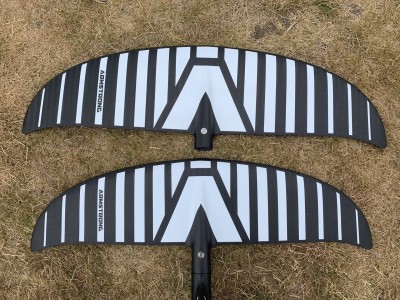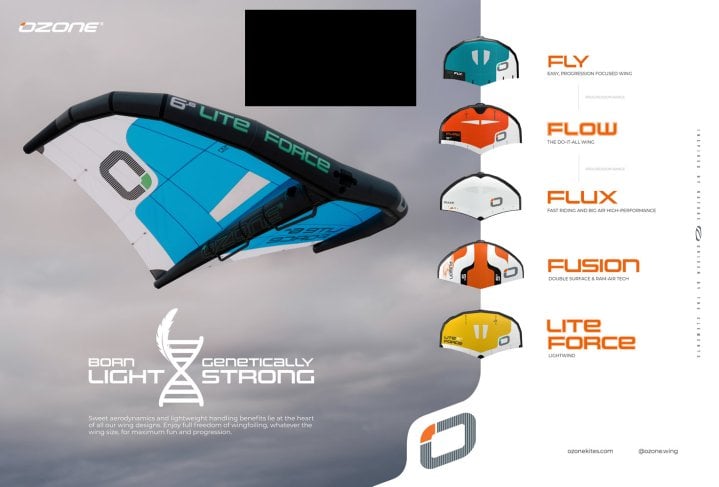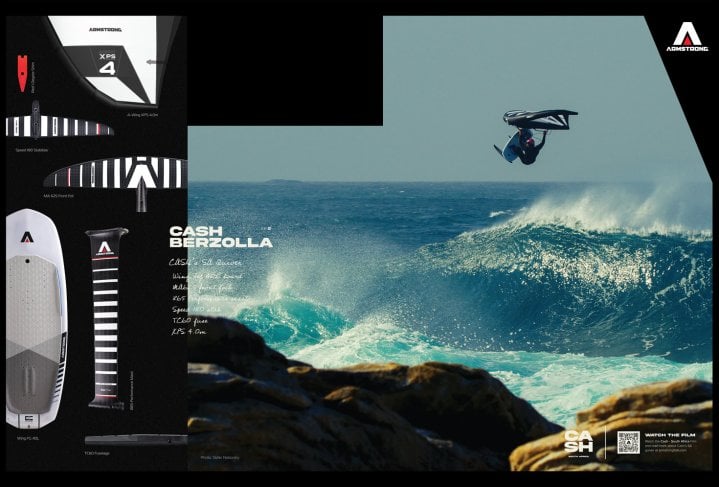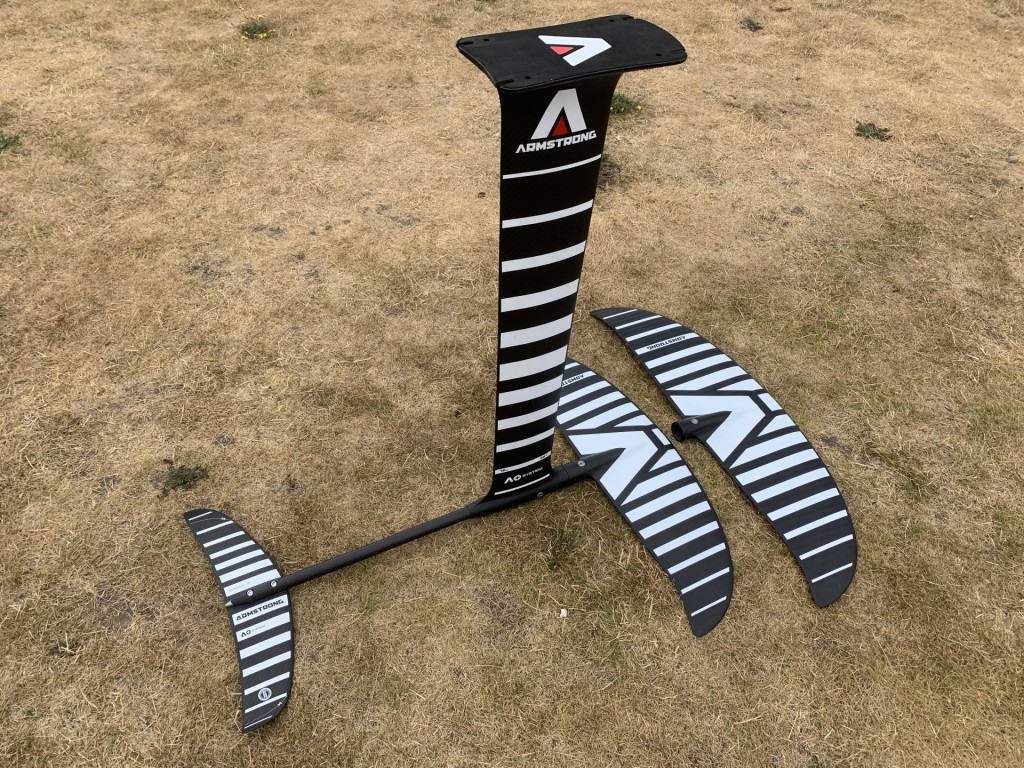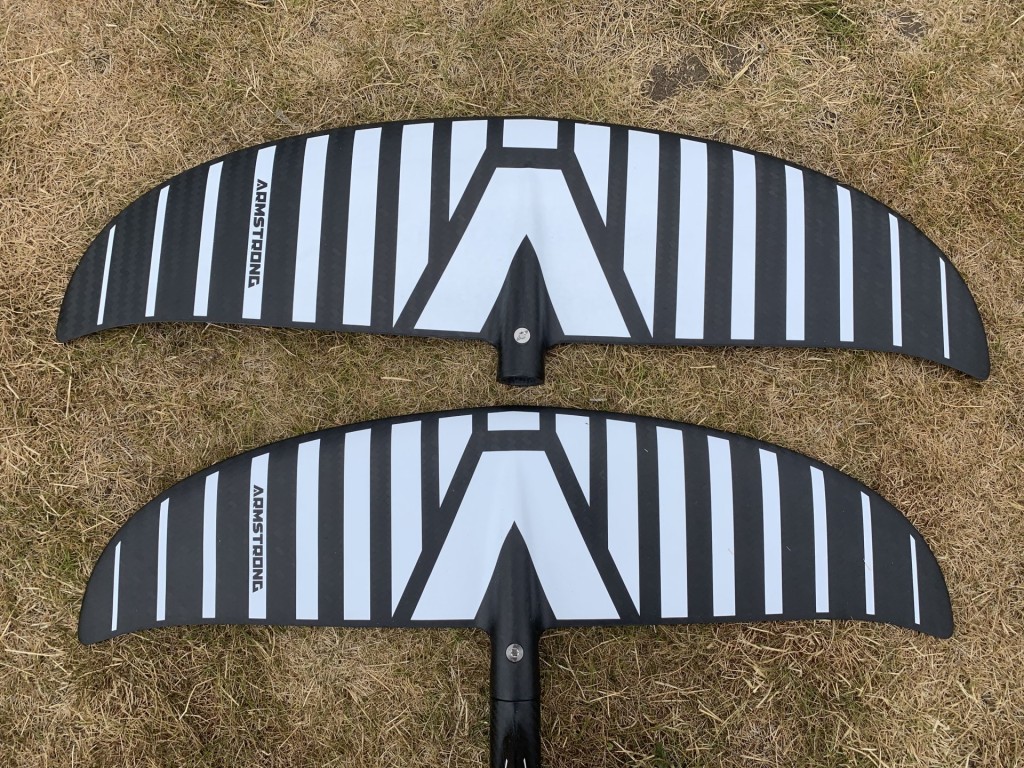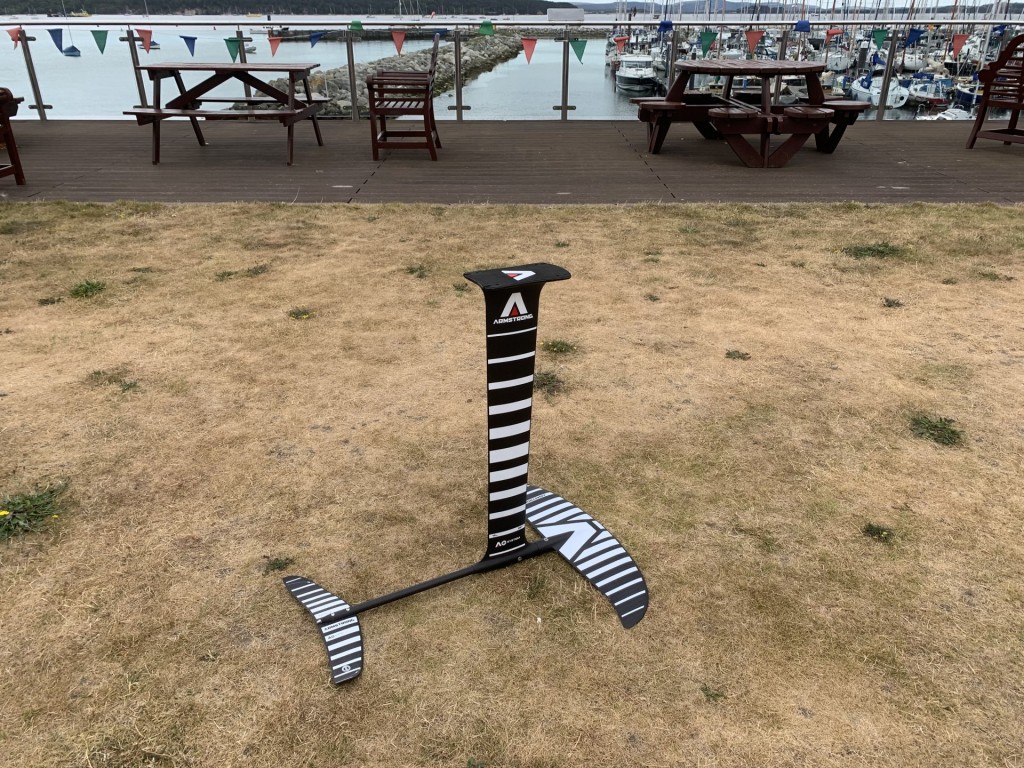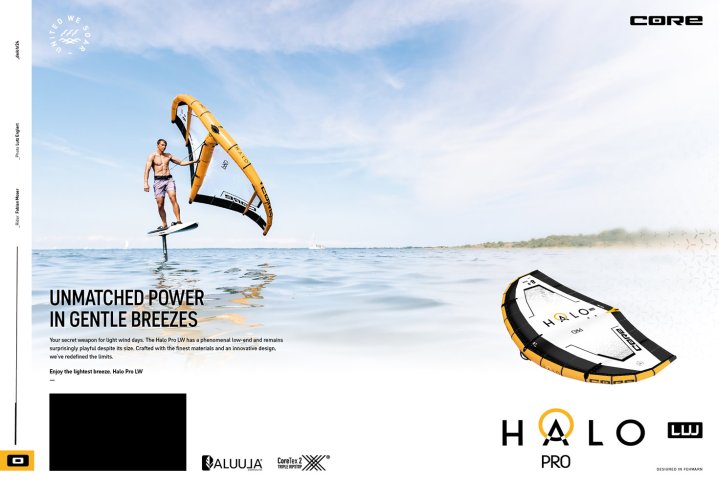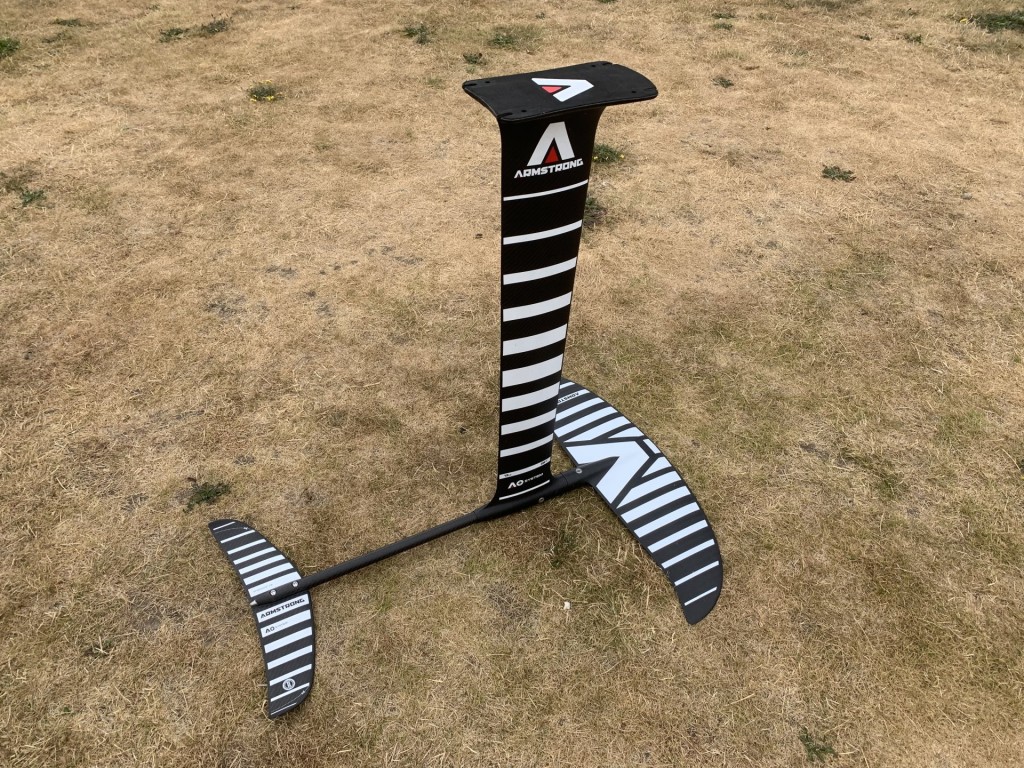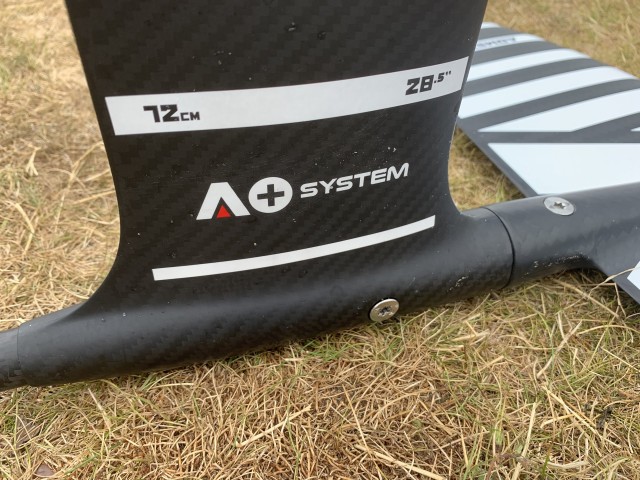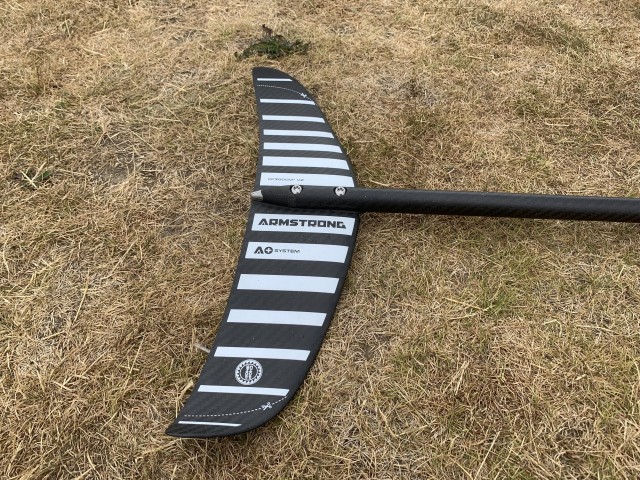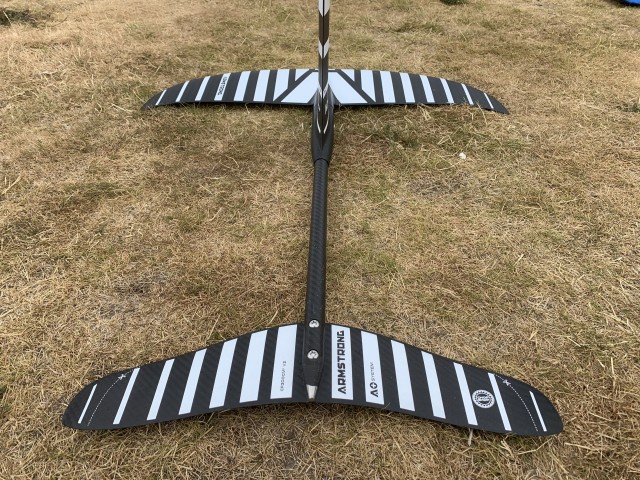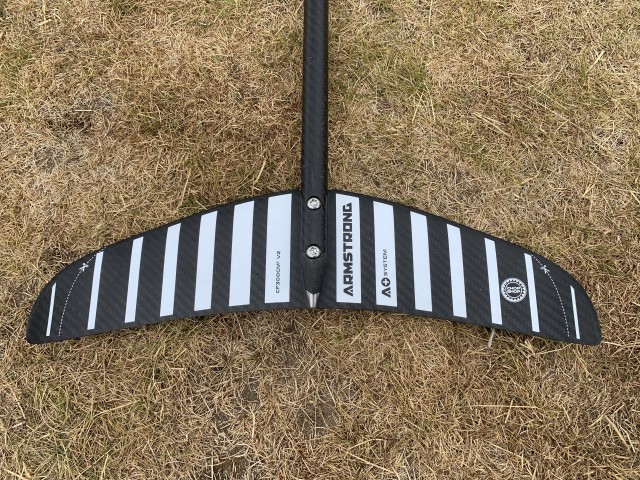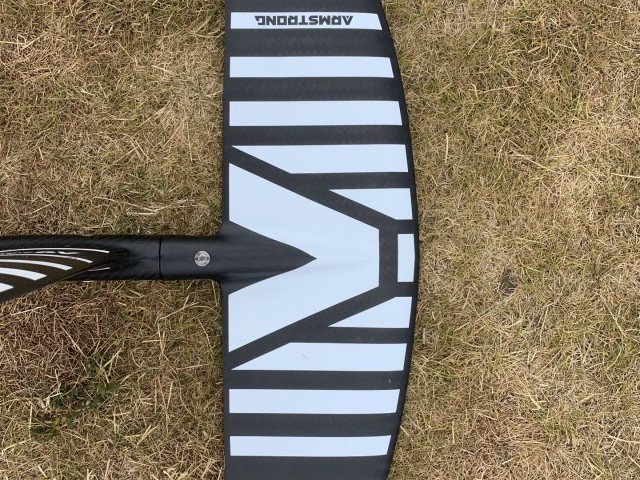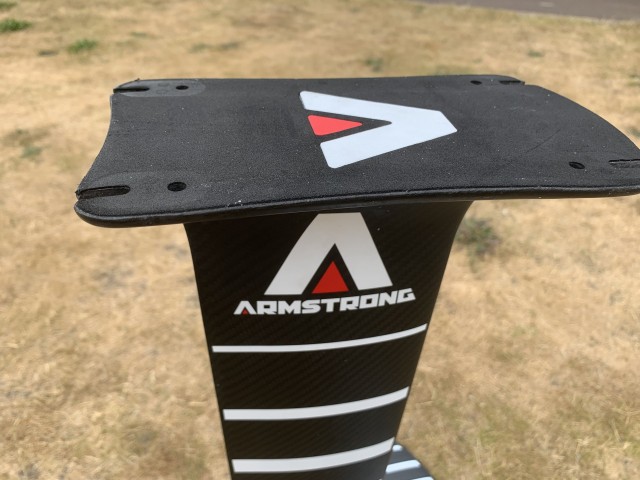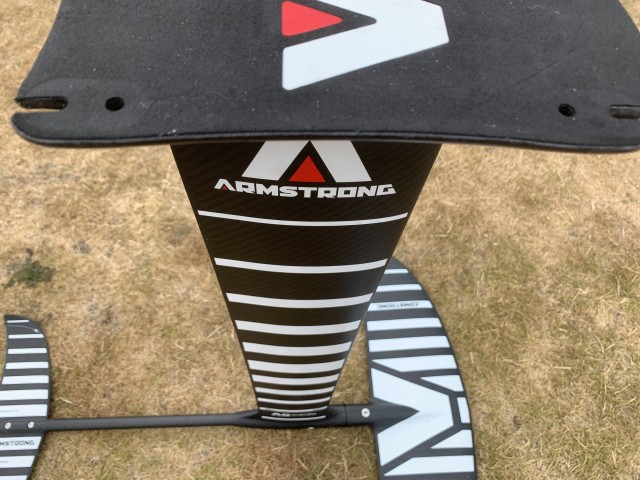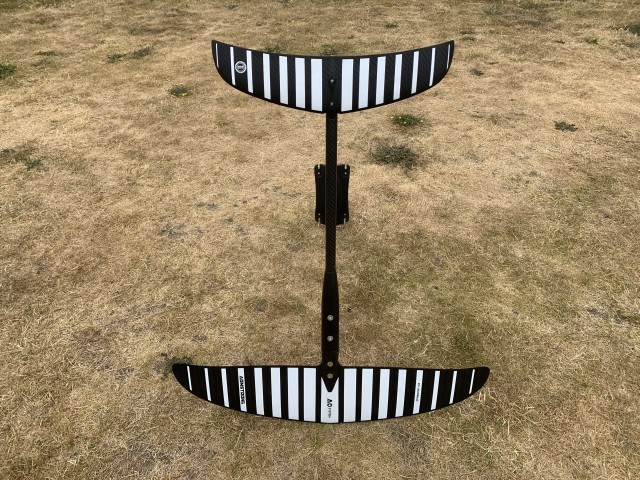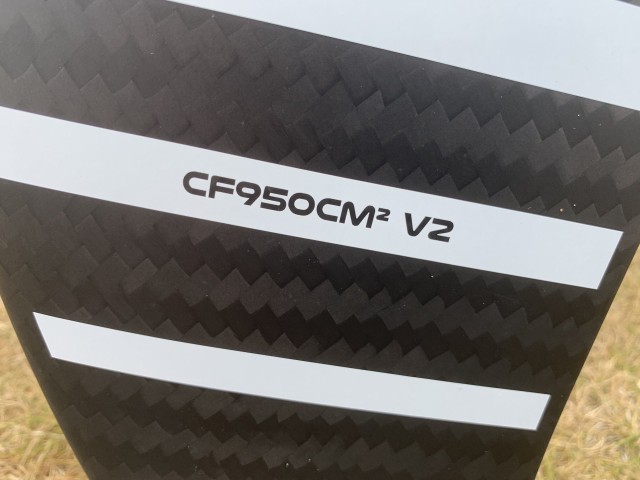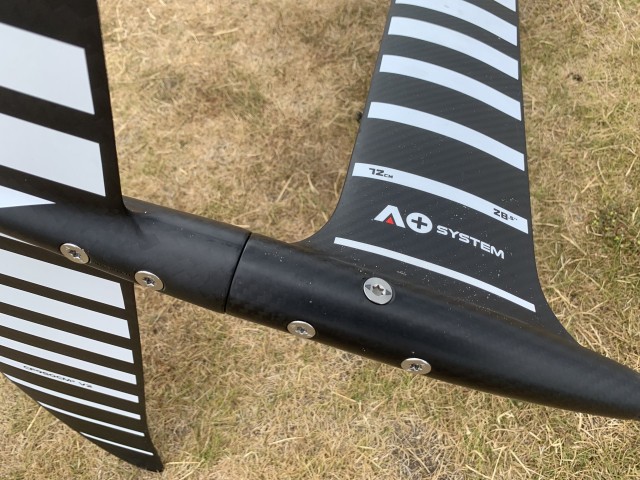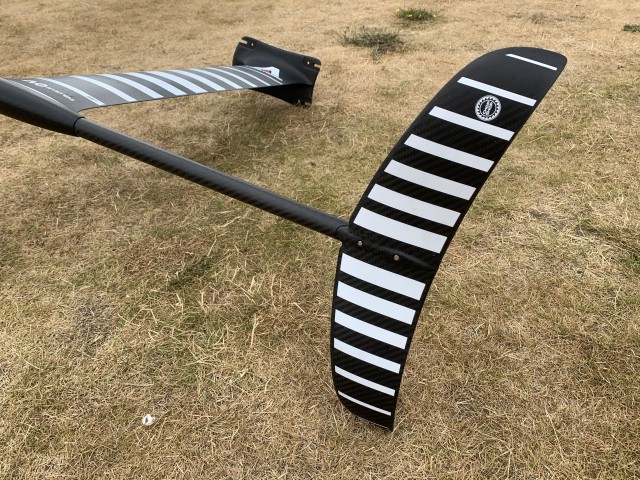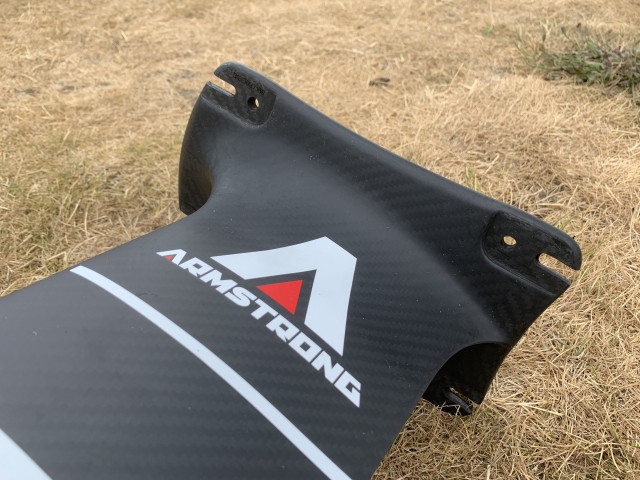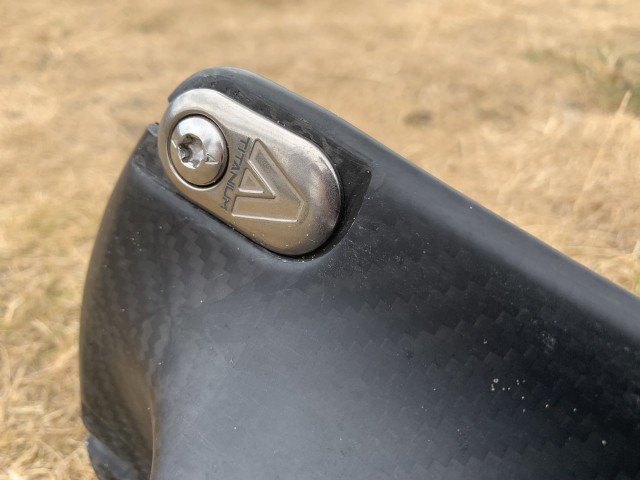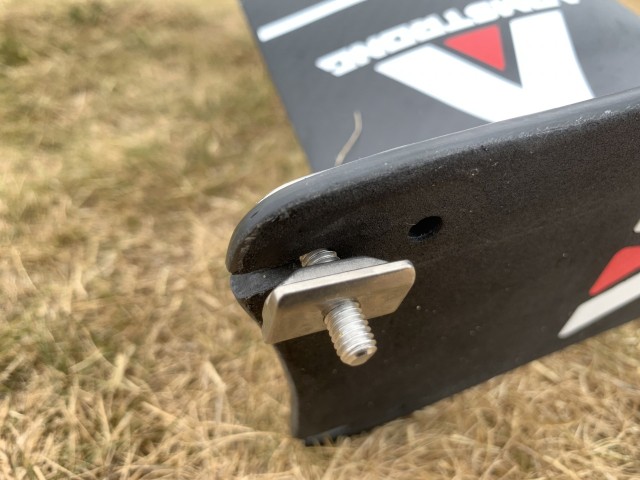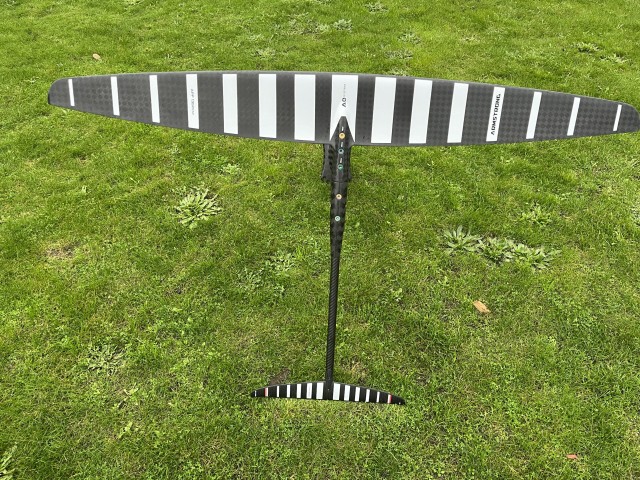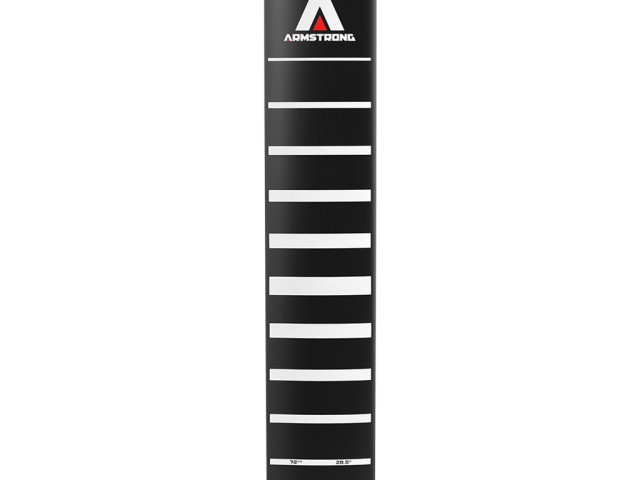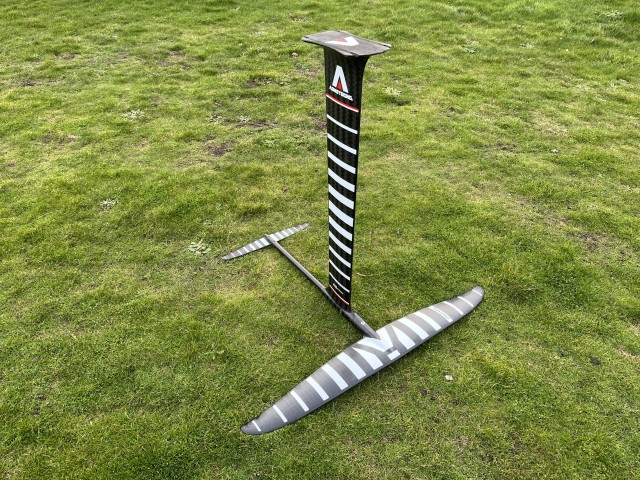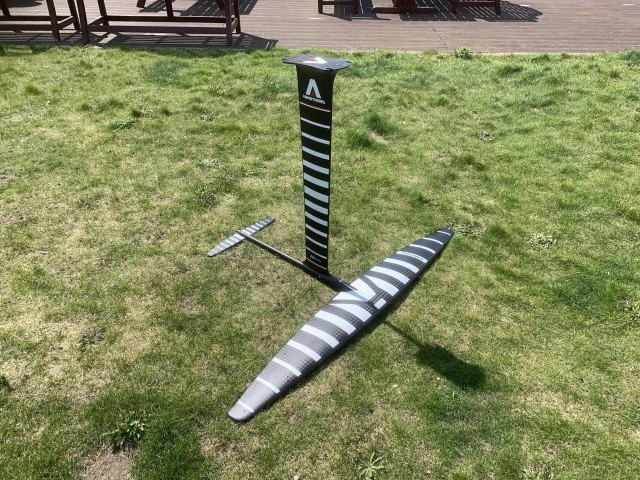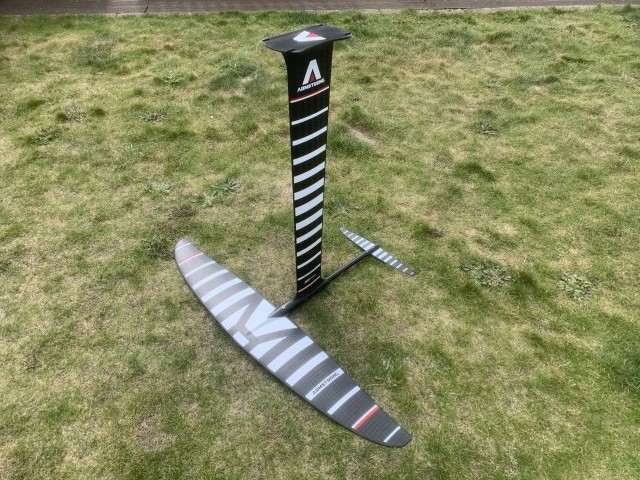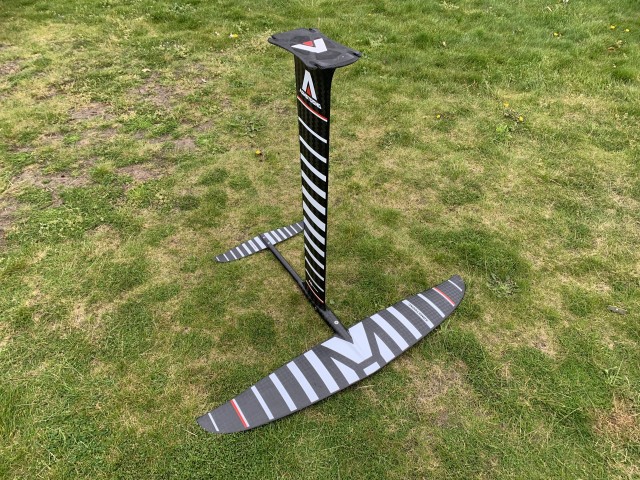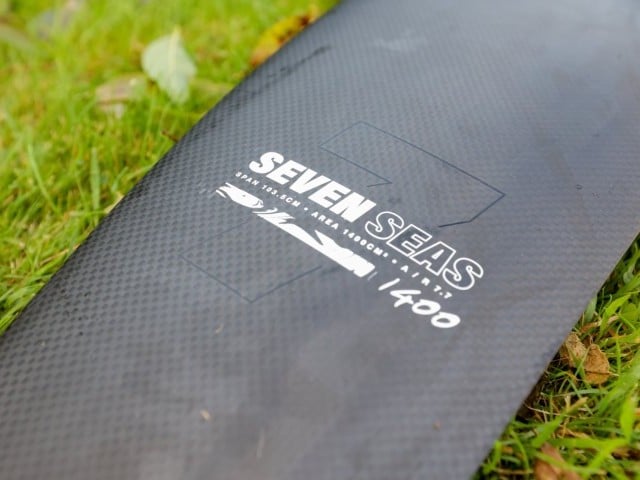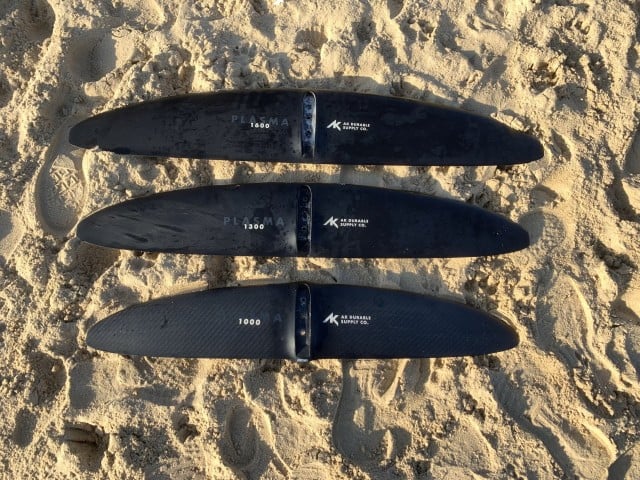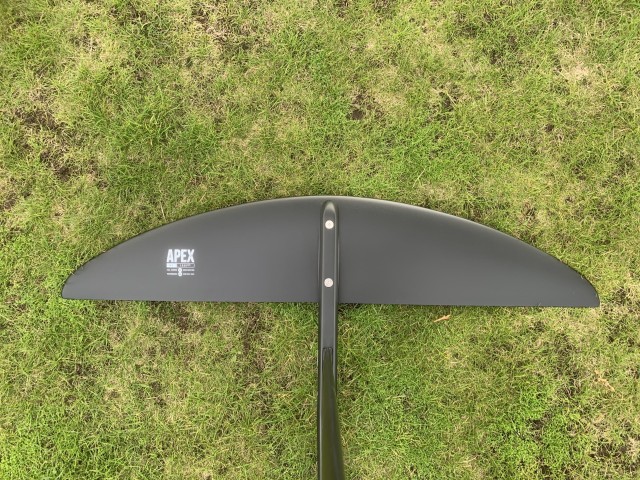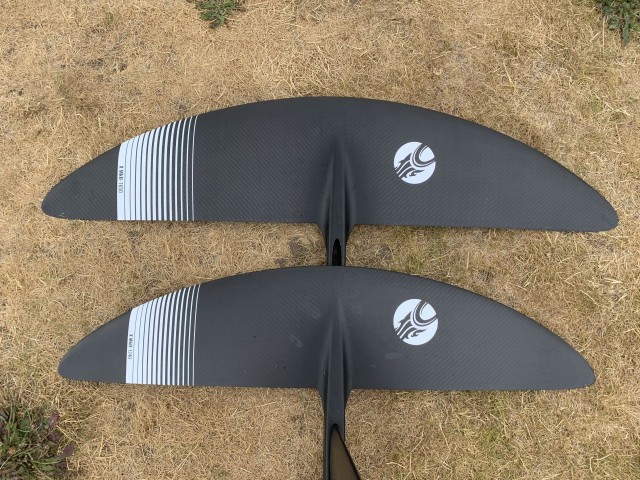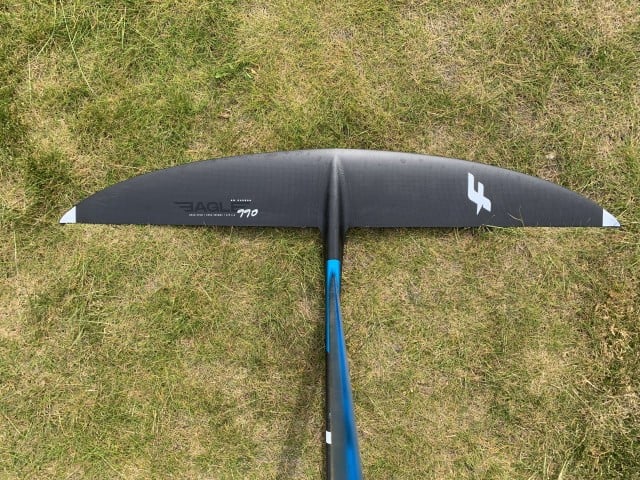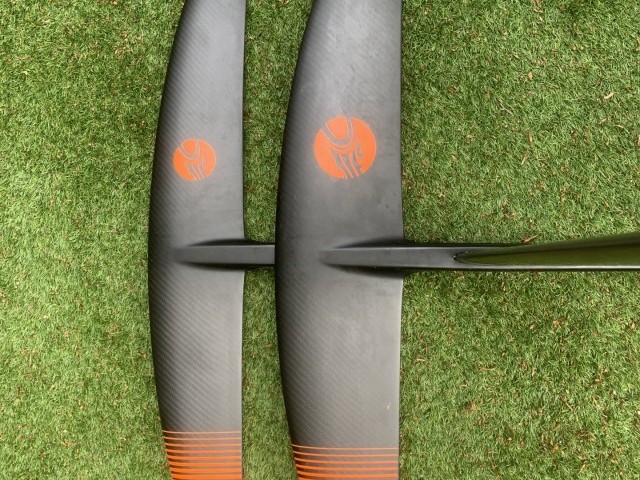At A Glance
Armstrong's CF V2 is their all-around foil lineup. Ranging from 950cm2 all the way to 2050cm2. It’s designed for beginners seeking a foundation for progression and experienced riders pushing their limits.
The attention to detail that Armstrong has put in is immediately obvious when getting it out of the box. This foil has the highest quality components and finishes that I’ve seen. Everything is full carbon fibre and all hardware is titanium. Construction is based around a high-density foam core, which is wrapped with 100% IM and High Modulus Carbon. The mast connection to the fuselage and in turn the front & rear wings is genius. The fuselage has a solid titanium core running throughout its length, all of the titanium screws tap into this core using a unique barrel nut connection. Making it the strongest, corrosion-free design that I’ve seen, even if it does take a bit of time to put together! It’s worth it.
The mast has a tapered one-piece design that looks incredibly solid. Armstrong has put in a unique core layup designed to deliver smooth consistent reactive flex. You’re going to hear the word ‘titanium’ several times, one example being the mast to board connection. Armstrong has created a strong and corrosion-free connection system using titanium bi-directional washers, titanium T-Nuts, and their own Torx head stainless steel 316L screws. For those that don’t know, Torx screw heads are far less likely to succumb to wear and tear due to the lack of slippage potential.
The anti-corrosion element of Armstrong is actually something that will take a while to get used to. I wash my foils with fresh water after every use after some bad experiences in the early days with aluminium to carbon connections. With Armstrong, this just isn’t necessary although out of habit I’m sure I’ll carry on doing it!
The CF V2 foil is on the mid-aspect range. It’s high aspect enough to glide & pump when you need it to, and low aspect enough to have good turn characteristics & jumping ability. It’s designed to have a low stall speed, adding to the control and stability of the foil.
On test I have both the CF950 & CF1200. Armstrong recommends the 70cm Fuse, CF300 tail, & 72cm for beginners so that is what I used, therefore giving me a full idea of just how user-friendly the foil is. Experienced riders can of course adapt, the 60cm fuse & HA195 tail, for example, would liven it up nicely. Something I’ll be trying in the weeks to come for sure!
On The Water
I had some incredibly fun sessions on both the CF950 & CF1200. The CF1200 I used in lighter conditions and the CF950 in stronger winds. I tested both foils on the Armstrong FG 4’10, a 39L board that I find brilliant for winging, you can see my review of the board in Issue 10.
Even when it wasn’t absolutely howling, I found myself using the CF950 more & more over the 1200. The reason for that being the sheer speed of the 950. Even at speed, the CF V2 has tons of stability, giving you the confidence to manoeuvre freely and get airborne. As you’ll see in the embedded video, I couldn’t help but continually do jumps on the CF950! The smaller mid-aspect shape meant it popped really well out of the water, the landings however were a game changer for me. I’ve never experienced a foil that lands so smoothly & easily. When I touch down on high-aspect wings, I get this uncomfortable lift & feedback immediately, before my board even touches the water. With the CF V2, the foil falls effortlessly into the water and it feels like my board takes the impact. This made my consistency with landings much higher than before and was super rewarding. Another note on jumping; the strength of the mast to fuse connection inspires confidence, with Armstrong gear you never have to worry about bending or snapping a mast.
In lighter or marginal conditions the 1200 was the go-to foil. The stall speed is very slow, meaning you get up on foil quickly and stay on foil through the lulls. I can only imagine how easy it would be to ride the larger sizes in the range. The CF1200 pumped well, not as well as a full high-aspect foil like the HA1125, but well enough. Its advantages come in the form of super fun turns on the waves and manoeuvrability in gybes & tacks. If you’re working on your gybes & tacks then this is the foil for you, turns quickly & maintains stability whilst gliding.
While I only got the opportunity to wing on these foils, they’re designed to prone, wake, downwind, & kite. I have no doubt they’d do it exceptionally well, you can see the Armstrong website for recommendations on sizes for each discipline. I love the idea of having one foil that does it all, this isn’t a cheap sport we do so if our gear can cross disciplines I’m all for it.
Overall
Armstrong’s CF V2 foil is the ideal all-rounder, whether you’re starting out or sending huge airs, this foil has you catered for. Armstrong’s famously high-quality build is a worthwhile investment that will last for years & years. The adaptability of the accessories as you progress, like extra tails & different fuses, only adds to that longevity.
CF stands for ‘Carving Freeride’ and it couldn’t be more true. I highly recommend them.
Videos
This review was in Issue 13 of Tonic Mag.
For more information visit Armstrong FoilsRelated
By Jack Galloway


